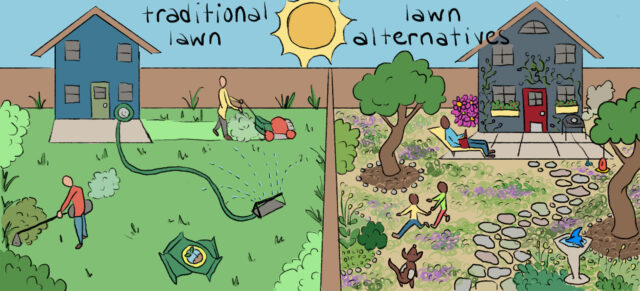Issue:

Lawns are currently the number one irrigated crop in the U.S. covering an estimate of 40 million acres. They require an excessive amount of resources to be maintained including water, gasoline, pesticides and fertilizers. Additionally, standard lawns create a monoculture that can’t support insect or animal life.
Benefits of Converting Your Lawn:
Removing part or all of your lawn and replacing it with drought tolerant and low maintenance native grasses and wildflower cover crops is one of the best ways you can implement sustainable landscaping, increase biodiversity, and foster wildlife and pollinator habitat. This can also contribute to healthier streams with fewer fertilizers and pesticides draining into our waterways.
How to Convert Your Lawn:
- Plan what section you want to convert. Start with a small portion of your lawn to avoid getting overwhelmed.
- Assess the site by testing the soil to determine the pH, organic matter content, and overall soil type.
- Choose plant species that are suited best for your microclimate and location.
- Prepare the soil by removing existing vegetation using your method of choice. Make any soil amendments if needed.
- Plant and seed your new species. A good time to seed is in the fall so seeds can germinate in the early spring.
- Mulch to limit weed growth and retain soil moisture.
- Maintain the area. Establishing the plants will require more weeding and watering the first year, but then require little maintenance as time continues.
